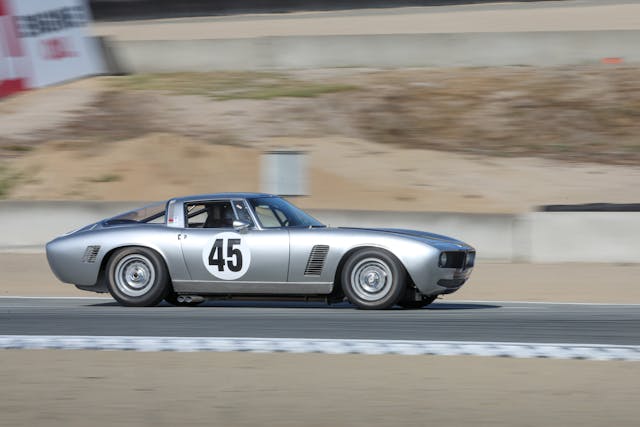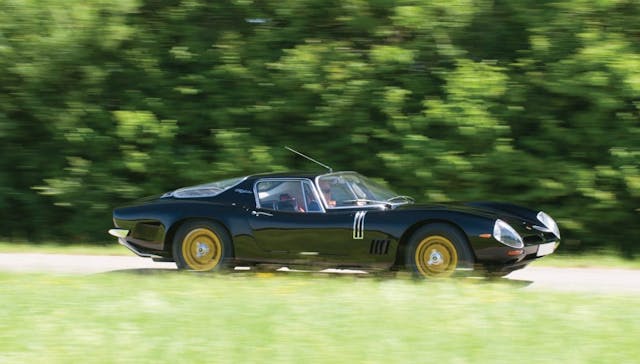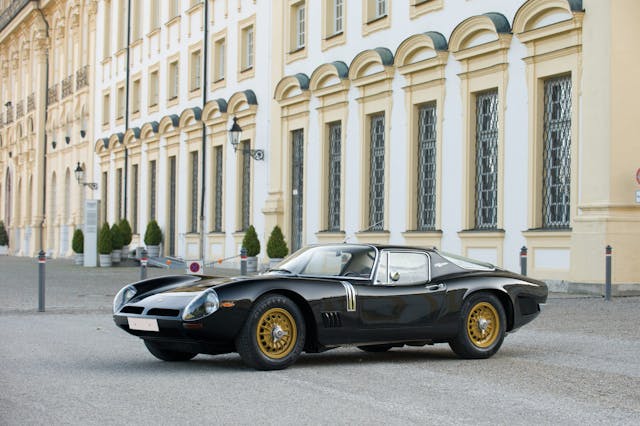Media | Articles
Can you guess the 5 best of Bizzarrini?
After more than 50 years of absence, the name Bizzarrini is back on a run of revivals of the Italian engineer’s glorious 1964 5300 GT Strada.
Undeniably beautiful, combining Giugiaro styling with American muscle, the 5300 GT should have been the car up to set Giotto Bizzarrini alongside Enzo Ferrari and Ferruccio Lamborghini in the list of iconic Italian sports-cars makers.
Unfortunately, it was not to be. Bizzarrini was rather better at engineering than he was at business and, having sunk all his own money into the firm, he brought in new investors who then scammed him out of everything. In 1968 the company went under, somewhat tarnishing the reputation of a man who up until then had an incredible career.
Born into a wealthy family in Livorno, Italy, Giotto Bizzarrini studied engineering in Pisa, completely redesigning a Fiat Topolino as part of his thesis in 1953. A year later he was at Alfa Romeo, developing the chassis for the Giulietta, and then moving to the firm’s experimental department and serving time as a test driver. “I became a test driver who coincidentally was also an engineer, with mathematical principles. I always need to know why something fails, so I can invent a solution,” he said.
He was soon poached by Ferrari, which is where we pick up his engineering adventures.
Marketplace
Buy and sell classics with confidence
Ferrari 250 GTO

Bizzarrini joined Ferrari in 1957 in a role that encompassed chief engineer, designer, and test driver. Working across the 250 series, the fruits of his labors could be seen in the three-liter V-12 engine and chassis of the GT 2+2 and GTE, the TR, and the GT. It was, however, the 250 GTO that was the crowning glory of his Ferrari career. Using his own Boano-bodied 250 GT as a test mule, Bizzarrini made major aerodynamic improvements, shifted the engine rearward for better weight distribution and lowered the center of gravity by using a dry-sump lubrication system for the V-12.
Despite the astonishing success of the GTO, which dominated the International Championship for GT Manufacturers from 1962 to 1965, Bizzarrini would not be there to enjoy the glory. Alongside Girolamo Gardini, Romolo Tavoni, Carlo Chiti, and others, Bizzarrini were forced out in Ferrari’s “Night of the Long Knives” after falling out with Enzo and his wife Laura.
The Breadvan

Bizzarrini and Chiti would have their revenge soon after forming Automobili Turismo e Sport (ATS) in 1961, initially to build Formula 1 and GT sports cars. Count Giovanni Volpi, another man spurned by Enzo Ferrari, wanted to campaign a 250 GTO, but Ferrari wouldn’t sell him one. Instead he purchased a 250 SWB and turned to ATS to upgrade it.
Bizzarrini took everything he’d learned from the GTO project and then went further. With the aid of Carrozzeria Sports Cars he sculpted a dramatic, shooting brake–style, aerodynamic body that would quickly be dubbed “The Breadvan.”
Lamborghini V-12

Bizzarrini founded Società Autostar in 1962 and one of his first clients was Ferruccio Lamborghini, who wanted a V-12 to power his 350 GT. Bizzarrini’s 3.5-liter, 60-degree motor was to be Lamborghini’s first in-house mill and such was the brilliance of his design that Sant’Agata would continue to use it for five decades. Fitted first to the 350 GT, Bizzarrini’s V-12 would power the Miura, Countach, Diablo, and Murcielago, eventually increasing its capacity to 6.5 liters and its power from 270 hp to more than 600 hp.
Iso Rivolta and Grifo

Having made its name in scooters and microcars (notably the Isetta), Iso Automotoveicoli had its eyes on bigger, faster and more profitable motor vehicles. Chairman Enzo Rivolta duly enlisted Bizzarrini and Società Autostar to develop its Rivolta and Grifo models in 1962.
Bizzarrini’s engine expertise wasn’t required, as the company opted to follow the likes of De Tomaso and mate an American V-8 to Italian styling. Instead Bizzarrini focused on the cars’ pressed-steel chassis, de Dion rear- and double-wishbone-front-suspension, and four-wheel disc braking system. Bizzarrini was itching to get back to racing, however, and after demonstrating the potential of an A3/C Grifo prototype at Le Mans in 1964, he parted company with Iso to go it alone.
Bizzarrini 5300 GT Strada

The A3/C Grifo became the Bizzarrini 5300 GT Strada and its sales would fund an assault on the 1966 Le Mans 24 Hour race. Or at least that was the plan. Bizzarrini also showed a nimble GT Europa 1900 and a monstrous GT America 7000 sports car at the 1966 Turin Motor Show, demonstrating tremendous ambition for the brand that carried his name. Unfortunately none of these cars made it beyond the prototype stage thanks to the financial mismanagement that killed the firm. They do, however, give the revived Bizzarrini company plenty of ideas of how to follow its first 24 GT Corsas.






